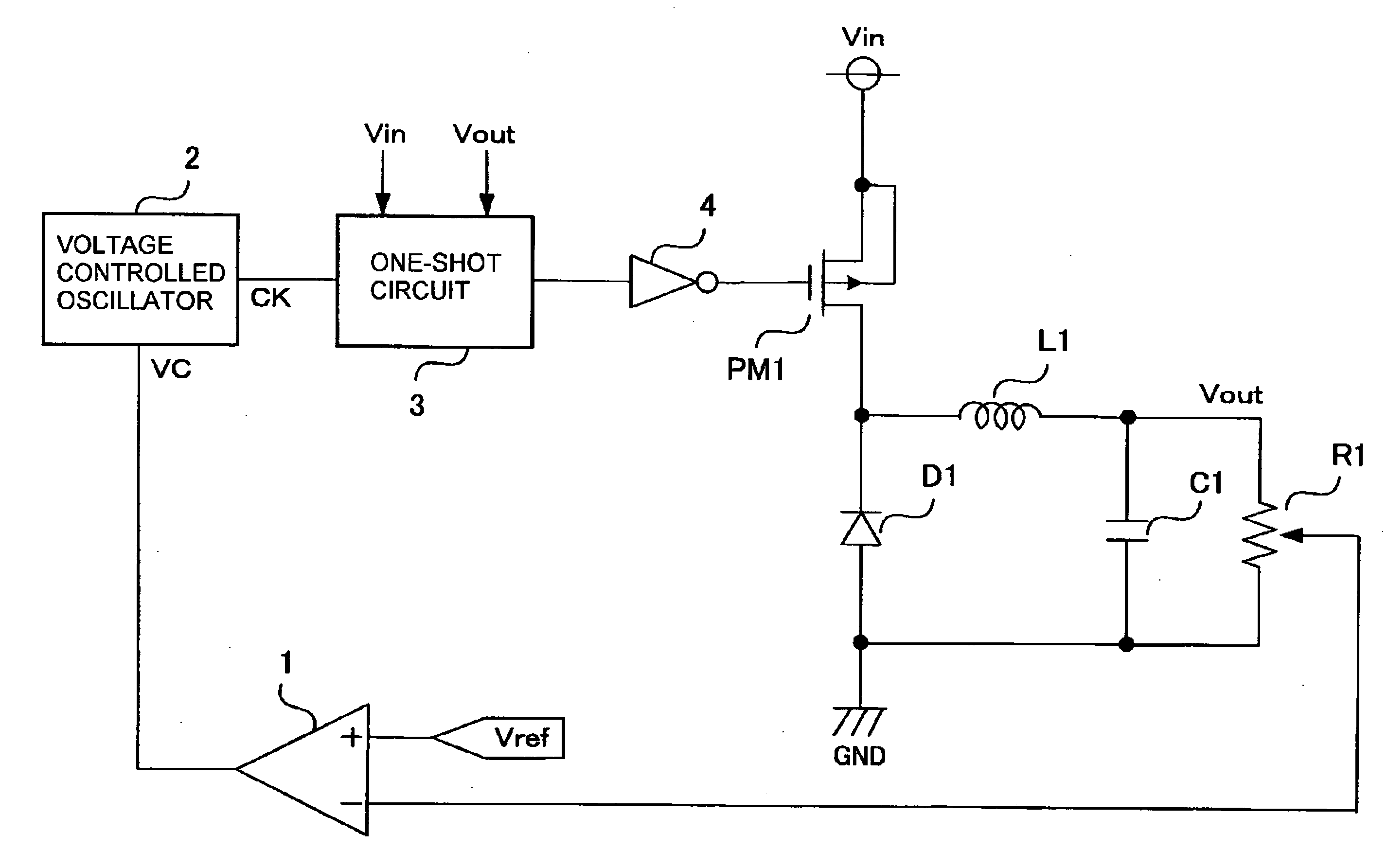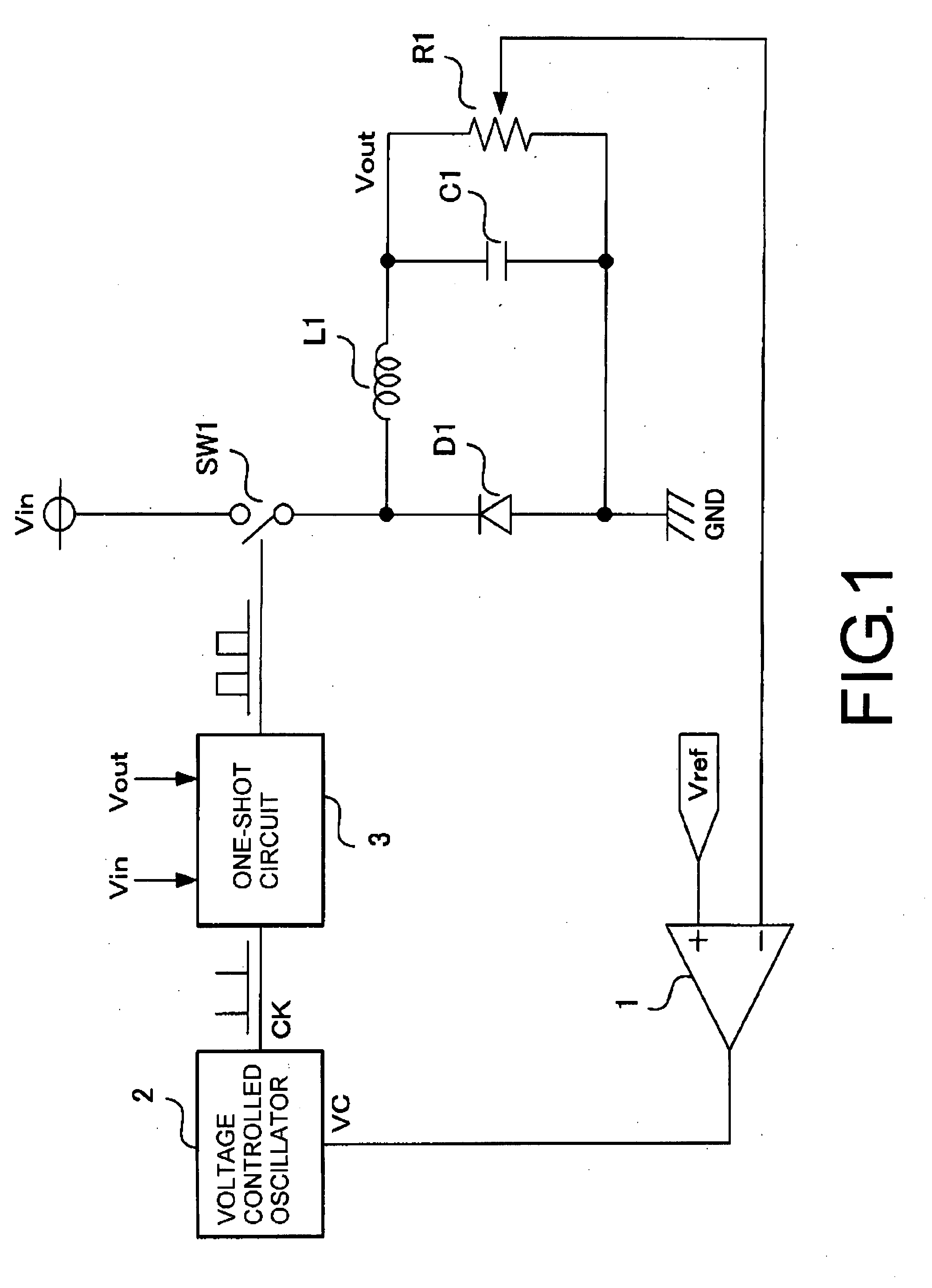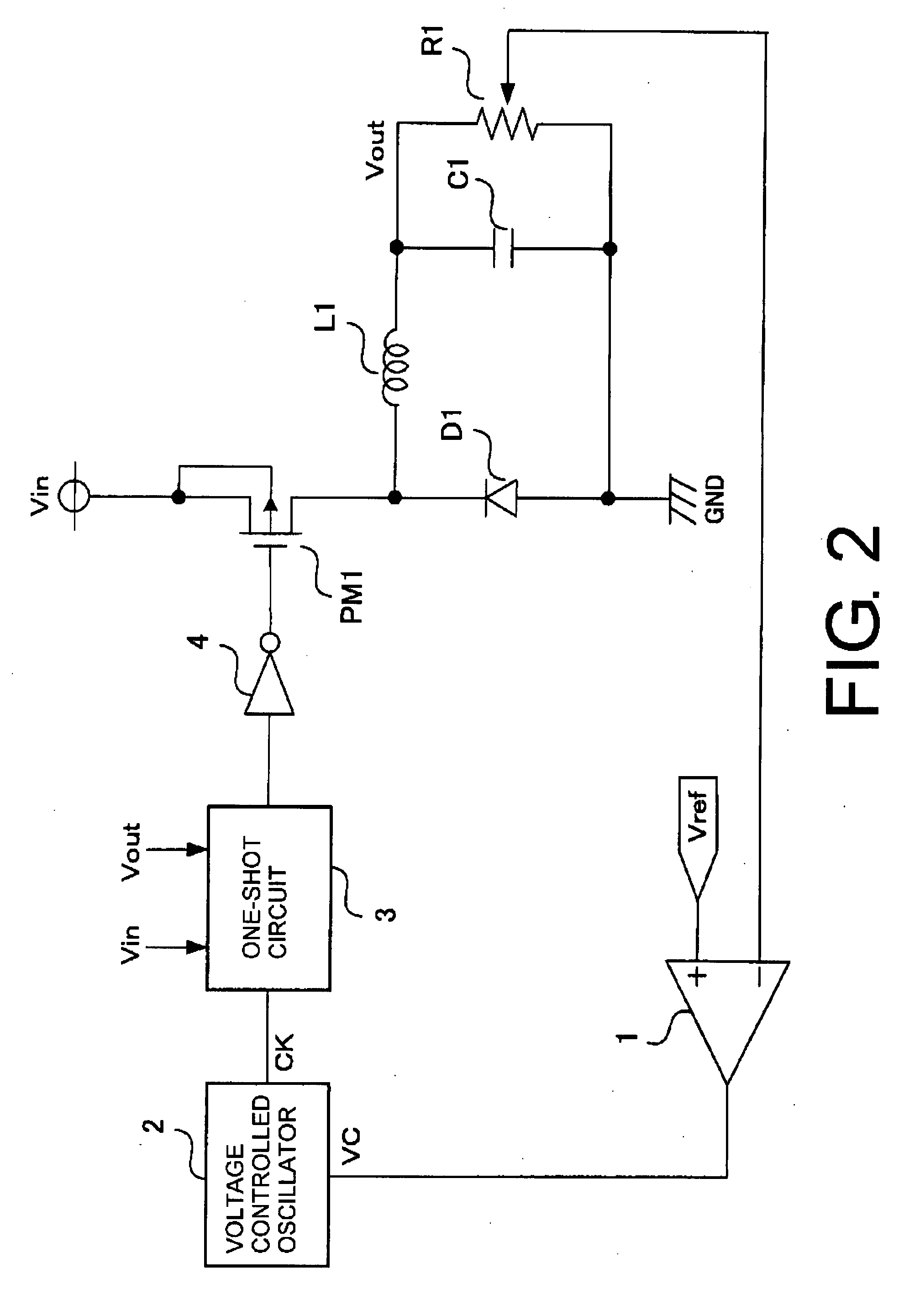DC-DC converter
a converter and converter technology, applied in the field of dc-dc converters, can solve the problems of increasing current consumption in the control circuit, complicated circuit configuration, and reducing power conversion efficiency, and achieve the effect of reducing current consumption and reducing current consumption
- Summary
- Abstract
- Description
- Claims
- Application Information
AI Technical Summary
Benefits of technology
Problems solved by technology
Method used
Image
Examples
Embodiment Construction
[0019]A preferred embodiment of a DC-DC converter according to the invention is explained in detail with reference to the attached drawings. FIG. 1 is a view showing the basic configuration of a DC-DC converter according to a preferred embodiment of the present invention. The DC-DC converter is a step-down converter that controls direct current power based on switching an input direct current on and off by means of an electric switch SW1, and includes a control circuit performing PFM control in which an ON time of the electric switch SW1 is fixed and an OFF time is variable. The ON time of the electric switch SW1 is linked to at least one of the input voltage change and the output voltage change by the control circuit performing PFM control. Concretely, the ON time of the electric switch SW1 decreases with rise of the input voltage Vin or increases with rise of the output voltage Vout.
[0020]The control circuit includes an error amplifier 1 including an operational amplifier amplifyi...
PUM
 Login to View More
Login to View More Abstract
Description
Claims
Application Information
 Login to View More
Login to View More - R&D
- Intellectual Property
- Life Sciences
- Materials
- Tech Scout
- Unparalleled Data Quality
- Higher Quality Content
- 60% Fewer Hallucinations
Browse by: Latest US Patents, China's latest patents, Technical Efficacy Thesaurus, Application Domain, Technology Topic, Popular Technical Reports.
© 2025 PatSnap. All rights reserved.Legal|Privacy policy|Modern Slavery Act Transparency Statement|Sitemap|About US| Contact US: help@patsnap.com



